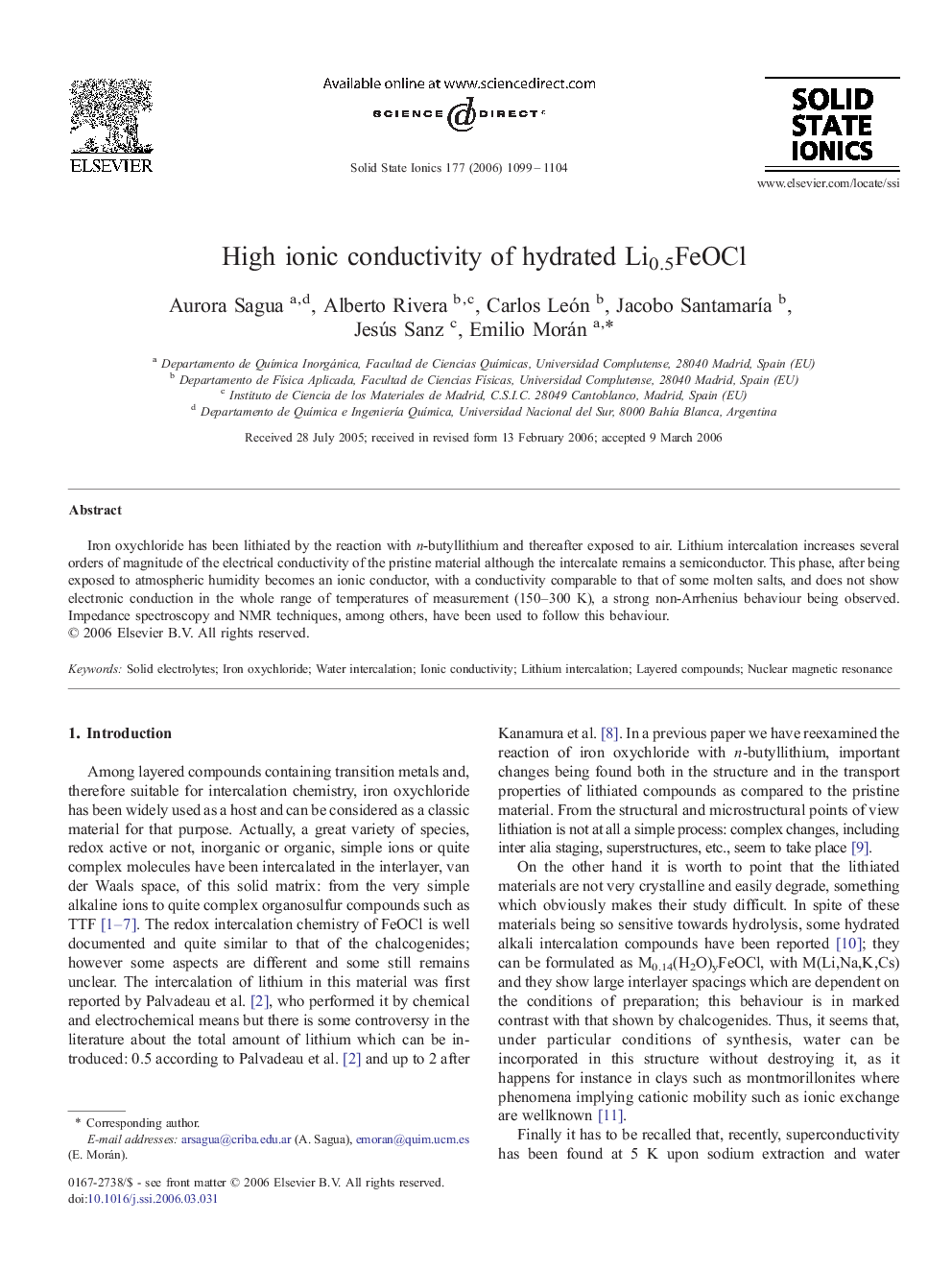| Article ID | Journal | Published Year | Pages | File Type |
|---|---|---|---|---|
| 1295624 | Solid State Ionics | 2006 | 6 Pages |
Abstract
Iron oxychloride has been lithiated by the reaction with n-butyllithium and thereafter exposed to air. Lithium intercalation increases several orders of magnitude of the electrical conductivity of the pristine material although the intercalate remains a semiconductor. This phase, after being exposed to atmospheric humidity becomes an ionic conductor, with a conductivity comparable to that of some molten salts, and does not show electronic conduction in the whole range of temperatures of measurement (150–300 K), a strong non-Arrhenius behaviour being observed. Impedance spectroscopy and NMR techniques, among others, have been used to follow this behaviour.
Keywords
Related Topics
Physical Sciences and Engineering
Chemistry
Electrochemistry
Authors
Aurora Sagua, Alberto Rivera, Carlos León, Jacobo Santamaría, Jesús Sanz, Emilio Morán,
